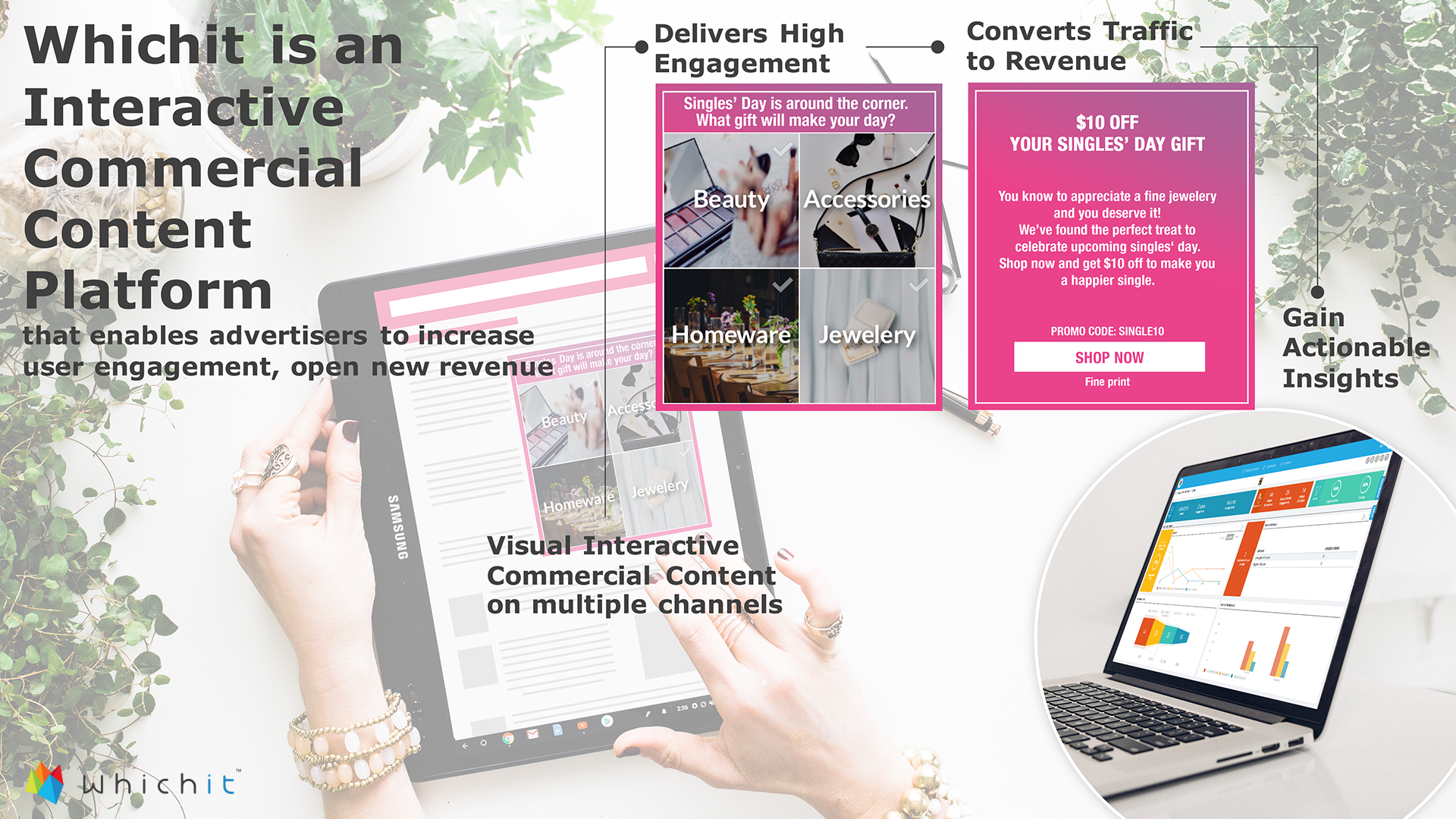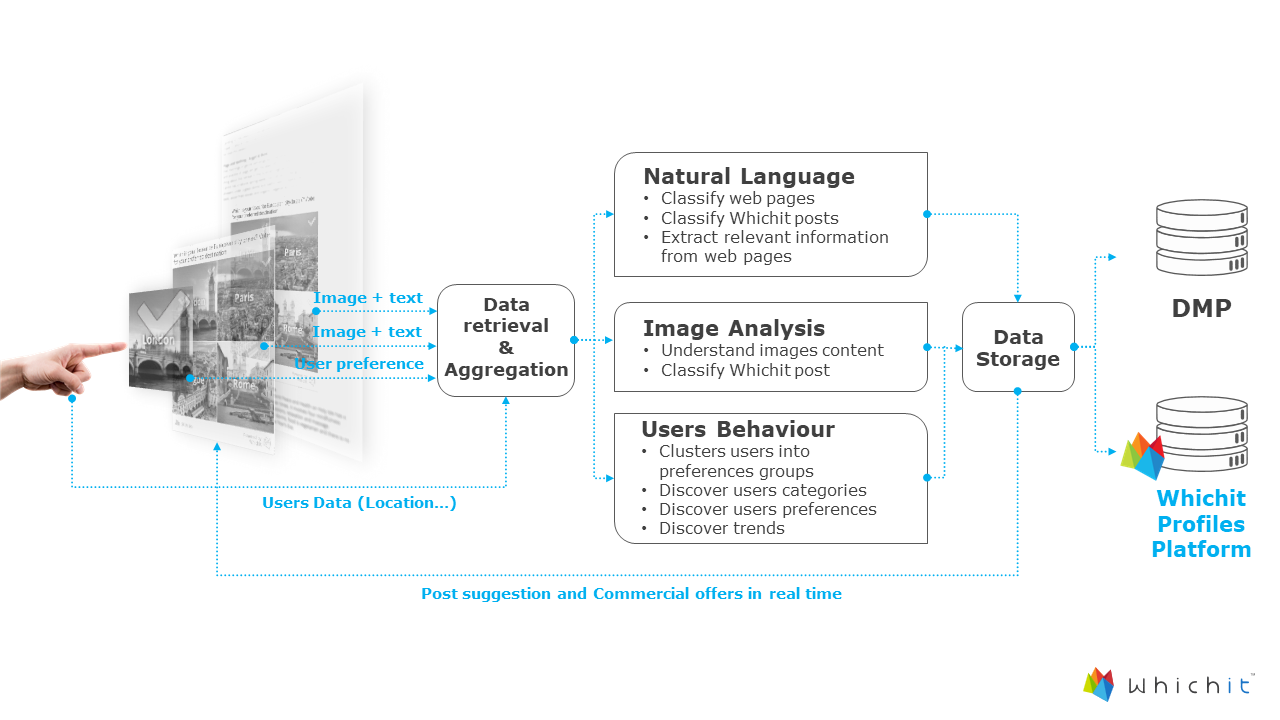Marketing and advertising are fast-paced industries, brimming with new technologies and constantly evolving. As new mechanics and AI become more accessible to businesses, more data is available to advertisers and marketers than ever before.
The Total Misalignment of Marketers
Presently, marketers, brands and advertisers are forced to rely on external companies with blanket solutions to collect demographic data and understand how their products exist, and how they are perceived by the users in the outside world.
Data is collected by businesses from a variety of sources including the end-user’s browser, the web pages they visit, third-party tracking pixels and browser cookies. The information collected by third-parties’ methods is perceived as informative, although it lacks the depth to make the insight truly actionable.
Furthermore, the demographic data captured by traditional methods is not indicative of:
What an end-user will purchase
How and when the user will make said purchase, and finally
How to best convert a user from a potential client to a paying customer
This causes businesses to believe that “An end user will engage with advertisements from Gap because they previously visited the Gap website”, or that “A female from London, aged 28 will engage with advertisements from Gap based on her gender, location and age”.
This type of information has proven to be ineffective when used to target users online. We can surely assume for example, that not all women living in London at 28 years old will want to buy the same product.
Traditional data captured by demographic-building market research tools may also contain Personally Identifiable Information (PII), which in turn the business cannot legally employ to address their end-users.
Not only are the dated binaries of ad targeting ineffective for profiling users, the feeble static demographic data never actually comes together to represent a real person. Perhaps the biggest let-down of the static information being fed to marketers and advertisers is that the data has a shelf life—yes, at one point the data did represent the user visiting a web page, although this data only really represents a person at the time of tracking. Further activity online could modify or even overwrite the existing static data captured about the user—the datasets never evolve into a realistic depiction of a human being.
Whichit - A Ringer in the Ads and Marketing Industry
Whichit’s mission statement as a company involves transforming data captured within interactive content into actionable insight—insight a brand, an advertiser or a marketer can use to effectively distribute their offerings online.
The company solves problems advertisers and marketing face while trying to communicate to their customers online effectively. Rather than relying on demographic data alone, Whichit establishes a specific type of behavioural data based on the preferences of an end-user: Interactive Commercial Content.
The result is that end-users are served advertisements in a personalised and unobtrusive manner, while businesses are able to effectively target exactly who they need to online, all with a message carefully tailored to that specific user.
About Whichit
Whichit is a B2B software company that develops and distributes a series of products for advertisers, brands, marketers and publishers alike. All products maintained by Whichit are built supporting the context of a question beginning with “Which” and are served via Interactive Commercial Content platforms. Whichit’s services are intended to supply businesses with at least three added benefits:
Increase user engagement
Open new revenue streams
Gain actionable insights
Whichit’s Machine Learning Technology
In order to effectively classify users and the content with which they interact, Whichit has developed an innovative machine learning algorithm that allows advertisers, brands and marketers to profile users in real-time based on their preferences.
Whichit’s interactive commercial content captures the user’s choice. The content is displayed to the user via an image-based poll and the choice a user makes becomes a multi-dimensional data-point. For example: “The user chose coffee over other options. This user not only likes coffee, but actually prefers coffee over tea, cola and soda water”.
Preference data, classified users and the classified content they view, interact with and convert on is processed through a sophisticated and precise machine learning algorithm developed by Whichit. Eventually, what Whichit maintains for a user is a digital DNA of preferences.
Following our previous example, a business would not need to target the 28-year-old woman living in London based only on her age, gender and location—the business can use the multi-dimensional data-points driven by the user’s choices to target them much more effectively. Our example transforms into: “The user who preferred the Straight Jeans and the Vintage Crewneck Shirt is more likely to convert on ads for similar products because they made the business aware of their preferences”.
The content provided by Whichit is tailored to the end-user based on what information they’ve provided to educate the system. A business can now effectively target a group of people with the same preferences—rather than their demographic data alone—with much better performance and conversion.
Operating the full power of Whichit’s machine learning, the business is now aware of:
What their users are looking for
How the user plans to make that purchase, and
What content will lead the highest conversion for a specific user
Due to the activity information captured by Whichit being anonymous and behavioural, there are no implications regarding data protection or PII restrictions; there are commercial message options containing lead-generation forms and those processes are fully GDPR compliant.
Finally, the data collected and fed through Whichit’s machine learning is virtually infinite in size: every additional data point captured by Whichit enhances the existing dataset exponentially. The end result of this ever-flowing data pool is the way for a business to identify their users online without ever knowing trivial demographic information concerning them.
The Building Blocks of Whichit’s Machine Learning
The overview Whichit’s machine learning technology can be divided into two main elements: Components, and Flow & Processing.
Components
The user. Whichit allocates all activities involving the placement of their interactive commercial content to the specific user that took the action—what they see, what they interact with, what makes them convert. The company is able to deliver predictive analytics to a business by comparing the actions of a user against those of the 151 Million users in the Whichit database.
The content. Whichit is able to classify content a user sees and interacts with online. Classifications and analytics for web pages are compared against a database of 680,000 other webpages. The content within a Whichit post appearing on a website is also classified and compared.
Data and events. Whichit holds more than 450GB of behavioural, analytic and classification data pertaining to the flow of interactive commercial content; the company has captured more than 1.26 Billion events, and the company’s dataset is growing month-to-month.
Flow & Processing
User classification. Whichit’s end-users are classified using the following:
Their location
Their preferences
The content they view
The content they engage with
Content classification. Content—web pages and interactive commercial content created with Whichit— is classified in three main stages:
Natural language analysis
Webpages are classified based on their content
Whichit posts are classified based on their text content
Relevant information is extracted from web pages
Image analysis
Computer vision understands image contents
Whichit posts are classified according to their image contents
User Behaviour
Users are clustered into groups represented by their preferences
Users are categorised based on their preferences
User preferences are discovered and predicted via content matching
Trends are discovered based on activity and engagement
Whichit’s Machine Learning in Action
Businesses are able to employ Whichit’s rich data analysis and insight delivery to inform their advertising campaigns and target their audience more effectively. The data Whichit collects for businesses is rich and multi-dimensional. Advertisers, brands and marketers use Whichit to run precise, detailed and informative market research at a much lower cost compared to contemporary market research reports.
Whichit is also able to provide businesses with content engagement predictions, based on the classification of the content they’ve published and the existing data-points the company has captured.
Whichit’s data escapes the binary restrictions of a user simply “liking” or engaging with content. Every data point sent via Whichit carries a choice: the user prefers one selection over another, and that user should be analysed with their preference in mind.
Thanks to the company’s machine learning algorithm, business users gain more actionable insights about their audience and are therefore able to cater their marketing efforts to users who are ready and willing to engage, learn and convert. Gone are the days of building an audience using archaic, stale demographic data like age, location and gender—Whichit helps you pinpoint your users based on what they really want!
Winners of the Innovate UK TSB Smart grant
Whichit developed the machine learning system and algorithms over the course of 18 months, a feat they were able to achieve by winning a TSB Smart grant from Innovate UK.
Innovate UK (source) (IUK) previously the Technology Strategy Board, is the main source of support for UK R&D and innovation. It is not only a grant-offering body but is responsible, as the name suggests, for UK innovation strategy in many of its variations.






